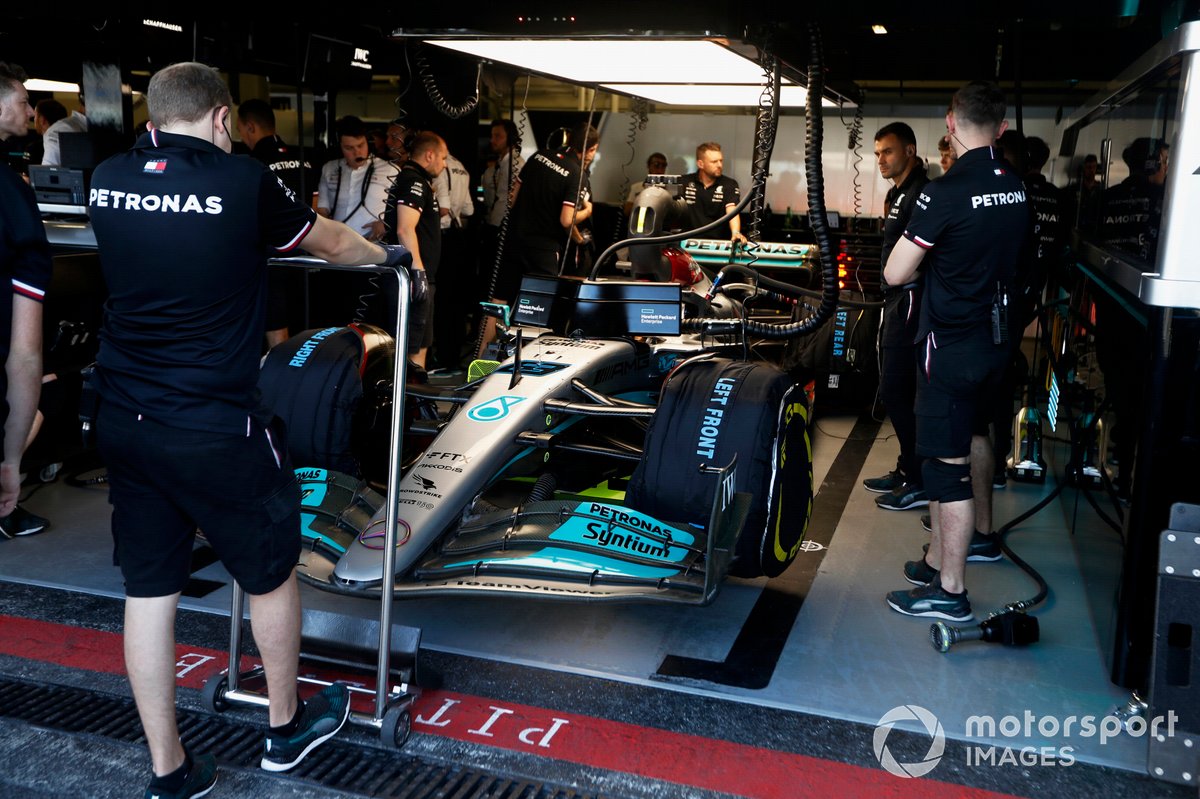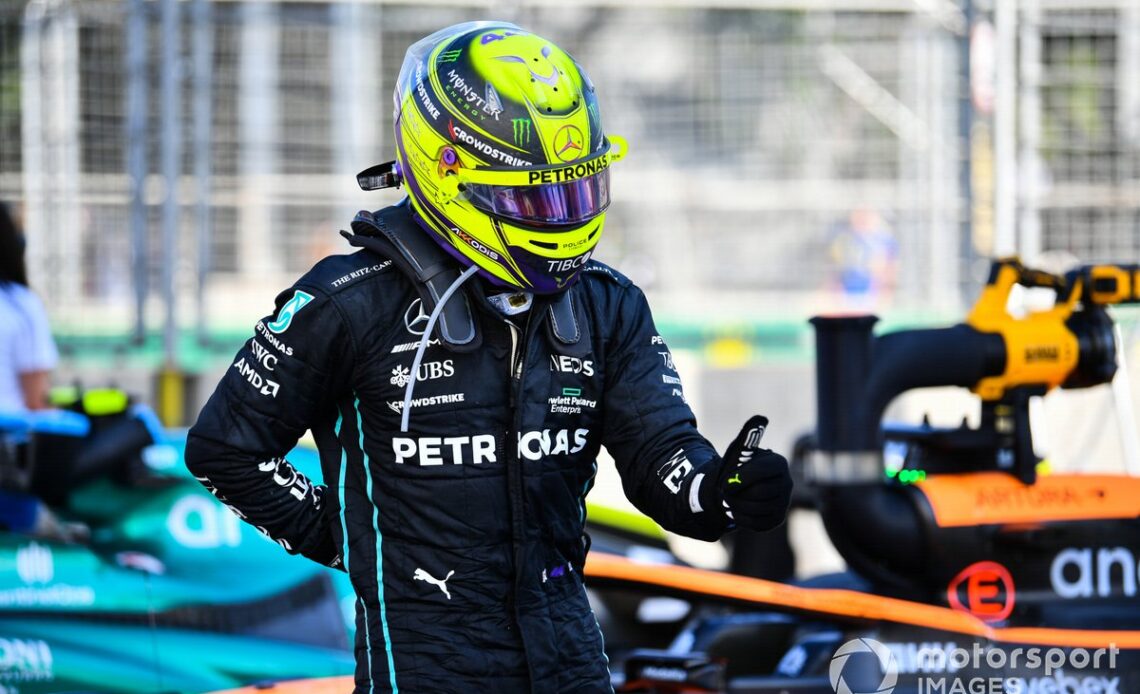Just three races ago, a package of changes introduced for the Barcelona race appeared to have transformed the pace of the W13.
The Mercedes had delivered its strongest form of the season and Hamilton’s charge from the back to finish fifth left team boss Toto Wolff suggesting he had the fastest race car that day.
But any hopes that the Barcelona breakthrough signalled a turning point in Mercedes battles to tame its 2022 challenger have been rapidly dashed.
Both Monaco and Baku have proved to be incredibly difficult for its drivers – with the excessive porpoising that has been an ever-present hurting them both in competitive terms and the literal pain that Hamilton endured in Azerbaijan.
So was Barcelona a false dawn for Mercedes where circumstance flattered its car? Or have the last two races simply not played to the areas that the team has got on top of?
The answer is actually a bit of both.
Lewis Hamilton, Mercedes-AMG, in Parc Ferme
Photo by: Simon Galloway / Motorsport Images
Engineering compromise
Mercedes’ battle this year has been to run its car with rideheight and suspension settings that can have it as close to the ground as possible, but without triggering the porpoising and bouncing that annoy the drivers and hurt its form.
Run the car high and soft enough to alleviate the bouncing and it’s not fast enough, but go too low and too stiff and the porpoising is there with a vengeance.
As head of trackside engineering Andrew Shovlin has explained, the battle between those two conflicting demands has been a perpetual headache.
“We realise this is actually a very, very complicated problem,” he said. “It isn’t something that you can apply a resolution to and it’s gone and you can forget about it. It will always be there: you’re having to engineer around it.
“Maybe it’s taken longer than we would have thought but I think the problem is, as you sort of peel away the layers of the onion, there’s more layers of the onion to go. It’s very much like that the more you learn the more you realise you don’t know.”

George Russell, Mercedes W13
Photo by: Glenn Dunbar / Motorsport Images
Monaco and Baku factors
The crux of Mercedes’ problems is that its W13 produces its peak downforce performance when it runs very low to the ground.
And its ability to do that is helped when the ground itself is smooth and consistent – like it was in Barcelona.
So when track surfaces are more uneven and bumpy, as they have been in Monaco and Baku, then that…
Click Here to Read the Full Original Article at Autosport.com – Formula 1 – Stories…

